
sibianul
-
Posts
21 -
Joined
-
Last visited
Content Type
Forums
Store
Crowdfunding
Applications
Events
Raffles
Community Map
Posts posted by sibianul
-
-
On 4/20/2021 at 7:48 PM, arox said:
Hum !
A bit worrying that your second fsck complained. I do not understand why you couldn't unmount the fs or /dev/sda1 was not present and appeared the second time ? Did you run fsck with the fs mounted ro ?
The fs is probably repaired now but you should check your logs and have an up-to-date backup during some times. There are commands to check disk errors recorded by firmware (but not controller or cables errors). Anyway I experienced your problems a lot of times and still use the board and cards without problem.
Yes, BPI M1 with armbian was and always is a good solution. That is why I still use it although it is completely out-of-date. But I got the same sort of fs corruption case (triggered by usb bugs ?) with raspbian on RPI4.
The fs was still mounted, I havent use umount before running fsck but it was on read-only mode .
To check the disk I did install smartmontool and run the fast check on it, the result is bellow, I haven't googled yet but do you guys have a script that can alert in case it senses an SMART error on the drive ?
root@bananapi:~# sudo smartctl -t short -a /dev/sda smartctl 6.6 2016-05-31 r4324 [armv7l-linux-4.19.62-sunxi] (local build) Copyright (C) 2002-16, Bruce Allen, Christian Franke, www.smartmontools.org === START OF INFORMATION SECTION === Device Model: KINGSTON SA400S37120G Serial Number: 50026B7682034AC1 LU WWN Device Id: 5 0026b7 682034ac1 Firmware Version: SBFK71E0 User Capacity: 120,034,123,776 bytes [120 GB] Sector Size: 512 bytes logical/physical Rotation Rate: Solid State Device Form Factor: 2.5 inches Device is: Not in smartctl database [for details use: -P showall] ATA Version is: Unknown(0x0ff8) (minor revision not indicated) SATA Version is: SATA 3.2, 6.0 Gb/s (current: 3.0 Gb/s) Local Time is: Thu Apr 22 11:09:10 2021 EEST SMART support is: Available - device has SMART capability. SMART support is: Enabled === START OF READ SMART DATA SECTION === SMART overall-health self-assessment test result: PASSED General SMART Values: Offline data collection status: (0x00) Offline data collection activity was never started. Auto Offline Data Collection: Disabled. Self-test execution status: ( 0) The previous self-test routine completed without error or no self-test has ever been run. Total time to complete Offline data collection: (65535) seconds. Offline data collection capabilities: (0x79) SMART execute Offline immediate. No Auto Offline data collection support. Suspend Offline collection upon new command. Offline surface scan supported. Self-test supported. Conveyance Self-test supported. Selective Self-test supported. SMART capabilities: (0x0003) Saves SMART data before entering power-saving mode. Supports SMART auto save timer. Error logging capability: (0x01) Error logging supported. General Purpose Logging supported. Short self-test routine recommended polling time: ( 2) minutes. Extended self-test routine recommended polling time: ( 30) minutes. Conveyance self-test routine recommended polling time: ( 6) minutes. SMART Attributes Data Structure revision number: 16 Vendor Specific SMART Attributes with Thresholds: ID# ATTRIBUTE_NAME FLAG VALUE WORST THRESH TYPE UPDATED WHEN_FAILED RAW_VALUE 1 Raw_Read_Error_Rate 0x0032 000 100 000 Old_age Always - 0 9 Power_On_Hours 0x0032 100 100 000 Old_age Always - 27101 12 Power_Cycle_Count 0x0032 100 100 000 Old_age Always - 147 148 Unknown_Attribute 0x0000 100 100 000 Old_age Offline - 0 149 Unknown_Attribute 0x0000 100 100 000 Old_age Offline - 0 167 Unknown_Attribute 0x0000 100 100 000 Old_age Offline - 0 168 Unknown_Attribute 0x0012 100 100 000 Old_age Always - 0 169 Unknown_Attribute 0x0000 100 100 000 Old_age Offline - 6 170 Unknown_Attribute 0x0000 100 100 000 Old_age Offline - 7 172 Unknown_Attribute 0x0032 100 100 000 Old_age Always - 0 173 Unknown_Attribute 0x0000 100 100 000 Old_age Offline - 46138104 181 Program_Fail_Cnt_Total 0x0032 100 100 000 Old_age Always - 0 182 Erase_Fail_Count_Total 0x0000 100 100 000 Old_age Offline - 0 187 Reported_Uncorrect 0x0032 100 100 000 Old_age Always - 0 192 Power-Off_Retract_Count 0x0012 100 100 000 Old_age Always - 143 194 Temperature_Celsius 0x0022 075 069 000 Old_age Always - 25 (Min/Max 23/31) 196 Reallocated_Event_Count 0x0032 100 100 000 Old_age Always - 0 199 UDMA_CRC_Error_Count 0x0032 100 100 000 Old_age Always - 0 218 Unknown_Attribute 0x0032 100 100 000 Old_age Always - 0 231 Temperature_Celsius 0x0000 071 071 000 Old_age Offline - 29 233 Media_Wearout_Indicator 0x0032 100 100 000 Old_age Always - 74821 241 Total_LBAs_Written 0x0032 100 100 000 Old_age Always - 47642 242 Total_LBAs_Read 0x0032 100 100 000 Old_age Always - 1600 244 Unknown_Attribute 0x0000 100 100 000 Old_age Offline - 704 245 Unknown_Attribute 0x0000 100 100 000 Old_age Offline - 760 246 Unknown_Attribute 0x0000 100 100 000 Old_age Offline - 4153344 SMART Error Log Version: 1 No Errors Logged SMART Self-test log structure revision number 1 No self-tests have been logged. [To run self-tests, use: smartctl -t] SMART Selective self-test log data structure revision number 0 Note: revision number not 1 implies that no selective self-test has ever been run SPAN MIN_LBA MAX_LBA CURRENT_TEST_STATUS 1 0 0 Not_testing 2 0 0 Not_testing 3 0 0 Not_testing 4 0 0 Not_testing 5 0 0 Not_testing Selective self-test flags (0x0): After scanning selected spans, do NOT read-scan remainder of disk. If Selective self-test is pending on power-up, resume after 0 minute delay. === START OF OFFLINE IMMEDIATE AND SELF-TEST SECTION === Sending command: "Execute SMART Short self-test routine immediately in off-line mode". Drive command "Execute SMART Short self-test routine immediately in off-line mode" successful. Testing has begun. Please wait 2 minutes for test to complete. Test will complete after Thu Apr 22 11:11:10 2021On 4/20/2021 at 8:19 PM, arox said:BTW
A possible cause of repeated fs corruption is the power supply. (Or power cables).
I power the Banana board from a PC power source, it should have plenty of power to run the board and hdd. But I will check that too, as it's been running for 5+ years 24/7 .. exactly like the Banana M1 board
-
Guys, THANK YOU again
 it booted up successfully, I have my dashboard up and running again, without even touching the bananaPi board
it booted up successfully, I have my dashboard up and running again, without even touching the bananaPi board  Everything fixed remotely with your help.
Everything fixed remotely with your help.
This board is running flawlessly 24/7 for about 5 years, in 2018 I mounted an new SSD, but before that it worked an year or two, with the OS installed on a old HDD which failed afer an year or two. BananaPi rocks! Very stable.
Tough, I think I will try to use an USB flash drive, to save the temporary security camera files, I already have an NVR that save the camera footage 24/7, but I setup my cameras to upload to bananaPi FTP a photo on every motion detection, just to be able to view WITH JUST A SCROLL from left to right, ALL the daily movements around my house. It's much easier than logging to NVR and fast forward the video. And it's also what I want most, to have all the information centralized in one dashboard, I have the cameras, the photovoltaic panels production, house energy consumption, Heat Pipe solar water heater tank monitoring, control of my HVAC unit, office lights, LAN devices .. and for all those I have alerts, in case some values are off, or in case some devices are offline, I get an Pushbullet alert on my phone. What I haven't done yet, and I have the device, I just don't have time, it's a backup for the alerting system , in case there is no internet connection to my house, I purchased an 3G Sim module, I will attach it to an arduino board that will constantly query the BananaPi for a status, if the bananaPi responds, and it doesn't have any unsent alerts, it will do nothing , but if the bananaPi doesn't respond than I will get an SMS alert that the dashboard is offline, and the same arduino can "ask for a status" all my other arduino sensors, it just needs the router to work, not an actual internet connection
-
Thank you guys, I'm curently away from home, I can connect to it remotely but I can't phisically change anything (swapping sd cards ).
I will try to burn the same armbian distro on a new sd card, when I will arrive home, but untill than , I just tried now fsck and it seems it fixed a few things.
Now would you think it is safe to reboot it
root@bananapi:~# fsck -f /dev/sda1 fsck from util-linux 2.29.2 e2fsck 1.43.4 (31-Jan-2017) /dev/sda1: recovering journal Pass 1: Checking inodes, blocks, and sizes Pass 2: Checking directory structure Entry 'alarm_20210418T162929_0313.jpg' in /var/www/html/security_camera_storage/cam2 (268645) has deleted/unused inode 311335. Clear<y>? yes Entry 'alarm_20210418T162929_0690.jpg' in /var/www/html/security_camera_storage/cam2 (268645) has deleted/unused inode 311336. Clear<y>? yes Pass 3: Checking directory connectivity Pass 4: Checking reference counts Unattached inode 365658 Connect to /lost+found<y>? yes Inode 365658 ref count is 2, should be 1. Fix<y>? yes Pass 5: Checking group summary information Block bitmap differences: -(18199362--18199491) -(18222129--18222259) -(18258312--18258464) -(18264714--18264858) -(18271789--18271933) -(18274837--18274981) -(18276125--18276269) -(18276878--18277014) -(18278829--18278969) -(18280586--18280732) -(18284169--18284311) -(18322306--18322440) -(18371739--18371873) -(18388110--18388244) -(18405315--18405454) -(18414482--18414603) -(18908826--18908905) Fix<y>? yes Free blocks count wrong for group #577 (6958, counted=7038). Fix<y>? yes Free blocks count wrong (6116773, counted=3943820). Fix<y>? yes Free inodes count wrong (7078589, counted=7056170). Fix<y>? yes /dev/sda1: ***** FILE SYSTEM WAS MODIFIED ***** /dev/sda1: ***** REBOOT SYSTEM ***** /dev/sda1: 275670/7331840 files (5.3% non-contiguous), 25361130/29304950 blocks
And as you recommanded I run the fsck another time
root@bananapi:~# fsck -f /dev/sda1 fsck from util-linux 2.29.2 e2fsck 1.43.4 (31-Jan-2017) Pass 1: Checking inodes, blocks, and sizes Pass 2: Checking directory structure Pass 3: Checking directory connectivity Pass 4: Checking reference counts Pass 5: Checking group summary information Free blocks count wrong (3936310, counted=3943820). Fix<y>? yes Free inodes count wrong (7056168, counted=7056170). Fix<y>? yes /dev/sda1: ***** FILE SYSTEM WAS MODIFIED ***** /dev/sda1: ***** REBOOT SYSTEM ***** /dev/sda1: 275670/7331840 files (5.3% non-contiguous), 25361130/29304950 blocks
root@bananapi:~# mount dev/sda1 /mnt mount: special device dev/sda1 does not exist root@bananapi:~# mount /dev/sda1 /mnt mount: /dev/sda1 is already mounted or /mnt busy /dev/sda1 is already mounted on / /dev/sda1 is already mounted on /var/log.hdd root@bananapi:~# cat /mnt/etc/os-release cat: /mnt/etc/os-release: No such file or directory root@bananapi:~# umount /mnt umount: /mnt: not mountedI rebooted the sistem, will post back later, if it will successfully reboot, if it won't , I will have to check it phisically tonight when I'll arive home.
Thank you very much for your help.
-
root@bananapi:~# mount -o remount, rw / mount: cannot remount rw read-write, is write-protected
I tried it but it doesn't work.
I copied almost all my files, just the big mysql database wasn't backuped already, as phpMyAdmin doesn't load. I will try to copy it somehow trough putty, before I will try to shut it down and check the disk.
What do you recommend regarding a "live image"? I could burn a distro you recommend on another sd card, and reboot it, with the SSD connected, and hopefully I could run the check disk commands from the same unit. All my other PC's have windows OS.
Thank you -
Hello everyone, I have a home dashboard (apache2 + php website) on this bananapi since 2018, when I installed a new SSD on it, now I noticed I can't open my dashboard anymore, and when I checked the logs I seen the drive was set to read-only mode.
I started to copy my data from it, but I hope I won't need to change the ssd drive.
Anyone around to give me some advices, how I could check and fix eventually the existing drive?Bellow are some logs.
Thank you
root@bananapi:/var/log# dmesg | grep sda [ 2.876748] sd 0:0:0:0: [sda] 234441648 512-byte logical blocks: (120 GB/112 GiB) [ 2.876842] sd 0:0:0:0: [sda] Write Protect is off [ 2.876852] sd 0:0:0:0: [sda] Mode Sense: 00 3a 00 00 [ 2.876992] sd 0:0:0:0: [sda] Write cache: enabled, read cache: enabled, doesn't support DPO or FUA [ 2.879218] sda: sda1 [ 2.881067] sd 0:0:0:0: [sda] Attached SCSI disk [ 5.535028] EXT4-fs (sda1): mounted filesystem with ordered data mode. Opts: (null) [ 6.807928] EXT4-fs (sda1): re-mounted. Opts: commit=600,errors=remount-ro [2962391.488423] EXT4-fs error (device sda1): ext4_validate_block_bitmap:376: comm apache2: bg 578: bad block bitmap checksum [2962391.500592] Aborting journal on device sda1-8. [2962391.501346] EXT4-fs (sda1): Remounting filesystem read-only [2962391.507343] EXT4-fs error (device sda1) in ext4_writepages:2884: IO failure [2969323.575865] EXT4-fs error (device sda1): ext4_remount:5257: Abort forced by user
root@bananapi:/var/log# cat /etc/fstab # <file system> <mount point> <type> <options> <dump> <pass> tmpfs /tmp tmpfs defaults,nosuid 0 0 UUID=62fc7248-9a57-4024-90d9-b4767bd2c697 /media/mmcboot ext4 defaults,noatime,nodiratime,commit=600,errors=remount-ro,x-gvfs-hide 0 1 /media/mmcboot/boot /boot none bind 0 0 UUID=9fb21562-a6fa-4b60-8453-bcf5bdda898a / ext4 defaults,noatime,nodiratime,commit=600,errors=remount-ro,x-gvfs-hide 0 1 root@bananapi:/var/log# mount -o remount, rw / mount: cannot remount rw read-write, is write-protected
root@bananapi:/var/log# fdisk -l Disk /dev/ram0: 4 MiB, 4194304 bytes, 8192 sectors Units: sectors of 1 * 512 = 512 bytes Sector size (logical/physical): 512 bytes / 4096 bytes I/O size (minimum/optimal): 4096 bytes / 4096 bytes Disk /dev/ram1: 4 MiB, 4194304 bytes, 8192 sectors Units: sectors of 1 * 512 = 512 bytes Sector size (logical/physical): 512 bytes / 4096 bytes I/O size (minimum/optimal): 4096 bytes / 4096 bytes Disk /dev/ram2: 4 MiB, 4194304 bytes, 8192 sectors Units: sectors of 1 * 512 = 512 bytes Sector size (logical/physical): 512 bytes / 4096 bytes I/O size (minimum/optimal): 4096 bytes / 4096 bytes Disk /dev/ram3: 4 MiB, 4194304 bytes, 8192 sectors Units: sectors of 1 * 512 = 512 bytes Sector size (logical/physical): 512 bytes / 4096 bytes I/O size (minimum/optimal): 4096 bytes / 4096 bytes Disk /dev/mmcblk0: 14.4 GiB, 15476981760 bytes, 30228480 sectors Units: sectors of 1 * 512 = 512 bytes Sector size (logical/physical): 512 bytes / 512 bytes I/O size (minimum/optimal): 512 bytes / 512 bytes Disklabel type: dos Disk identifier: 0xf7477067 Device Boot Start End Sectors Size Id Type /dev/mmcblk0p1 8192 29926175 29917984 14.3G 83 Linux Disk /dev/sda: 111.8 GiB, 120034123776 bytes, 234441648 sectors Units: sectors of 1 * 512 = 512 bytes Sector size (logical/physical): 512 bytes / 512 bytes I/O size (minimum/optimal): 512 bytes / 512 bytes Disklabel type: dos Disk identifier: 0xce16e6cf Device Boot Start End Sectors Size Id Type /dev/sda1 2048 234441647 234439600 111.8G 83 Linux Disk /dev/zram0: 50 MiB, 52428800 bytes, 12800 sectors Units: sectors of 1 * 4096 = 4096 bytes Sector size (logical/physical): 4096 bytes / 4096 bytes I/O size (minimum/optimal): 4096 bytes / 4096 bytes Disk /dev/zram1: 498.8 MiB, 523026432 bytes, 127692 sectors Units: sectors of 1 * 4096 = 4096 bytes Sector size (logical/physical): 4096 bytes / 4096 bytes I/O size (minimum/optimal): 4096 bytes / 4096 bytes
-
Quick update.
I turned it off again, but this time I also removed the power connector from the HDD (the HDD is powered from an external ATX source, the same source provides 5v to BPI M1, but when turning off BMI, the hdd is still spinning )
After plugging the connector back, and powering on the BPI, it booted up just fine. And exact same thing happent now a week or two ago, it only powered up after removing also the power from the HDD.
This setup was 24/7 online for almost one year, no problem at all until now. Should I change the HDD with a new SSD ? This one is an old HDD, about 4 - 5 years old.
If there are any logs you want to see to find any possible issue, just ask, I will be happy to show you anything.
Thank you.
-
Hello guys,
do you know what might cause this error, it seems my "smart home" controller is not booting up anymore.
In the last 2 weeks it happent again to not display any webpage while accessing it by IP, also the SSH was not working, all leds ware blinking like usually are, like there was normal activity, but it didn't respond to any request, only the ping was working, anything else was not (apache, samba, ssh). I turned it off by long-pressing the power button, it booted up, showing this warning "warning bad CRC - using default enviroment" and it passed by, showing the armbian logo and a blinking cursor, but that's it, nothing more. I think it is self restarting now like every 10 minutes.
Anyu ideea what might be wrong? Is it the HDD ? (The OS is on the SATA HDD)
If it's the HDD and it will still be accessible on another machine, do you guys know if there are tools to copy the entire disk to a new one ?
Thank you.
-
No, the images are saved to the HDD attached to BananaPi through the SATA interface. Is a linux standard partiton
root@banana:/dev/disk/by-id# sudo file -s /dev/sd* /dev/sda: DOS/MBR boot sector MS-MBR 9M english at offset 0x10+0xFF "Invalid partition table" at offset 0x127 "Error loading operating system" at offset 0x146 "Missing operating system", disk signature 0x44fdfe06, created with driveID 0x81 at 15:37:29; partition 1 : ID=0x83, start-CHS (0x0,1,1), end-CHS (0x3ff,254,63), startsector 63, 20980827 sectors; partition 2 : ID=0x5, start-CHS (0x3ff,254,63), end-CHS (0x3ff,254,63), startsector 20980890, 1932539175 sectors /dev/sda1: Linux rev 1.0 ext3 filesystem data, UUID=354516e5-69a7-4c4f-affb-e0b8c9237cb4 (needs journal recovery) (large files) /dev/sda2: DOS/MBR boot sector; partition 1 : ID=0x7, start-CHS (0x1,1,1), end-CHS (0x3ff,254,63), startsector 16128, 1932523047 sectors /dev/sda5: Linux rev 1.0 ext4 filesystem data, UUID=967bcb76-8f1e-4827-85d4-86082ae2250e (needs journal recovery) (extents) (large files) (huge files)Is there a problem, regarding the message for /sda ? (Invalid partition table)
Maybe I can setup vsftpd to save the files with permissions like 777, so this way I can access them using any user (php, ftp, samba) ?
UPDATE.
My solution is to add the next two lines in /etc/vsftpd.conf Now I can view in my dashboard all the images written by the security camera to bananaPi hdd, I will setup a new cronjob to delete old files, and only keep the most recent ones (3 days .. or maybe 7 days)
local_umask=0002 file_open_mode=0777 -
Thanks for your advices, it was quite easy to setup the ftp using your instructions, I also created a new user and setup the user home directory inside /var/www/html/security_camera_storage. The camera is saving new images each time there is motion, my only problem so far is how other users can access those images?
I tried to create a php script to scan the directory where images are saved but it seems it fails as the directory is owned by user securitycam, and php is running with a different user. I want to setup some cronjobs to scan and delete old files (let's say, I will delete every image older than 3 days), I will also need to display the images in my dashboard, so I will definitely need to find a fix to this "issue"
The other files in html folder are owned by admin user.
Any advices on how to setup the ftp to save files that can be accessed by admin user, are welcome

Thank you.
UPDATE
I have added user admin to group secuirtycam, but still didn't help:
sudo usermod -a -G securitycam admin
sudo chgrp -R securitycam /var/www/html/security_camera_storageAfter seeing that PHP still can't access that folder, I changed the permissions of that folder to 777. Is this such a bad thing? even if this bananaPi is a local device, obody else has access to this pi, just me.
sudo chmod -R 777 /var/www/html/security_camera_storage
This way it scans the folder, but unfortunately newly added files, are still not accessible, the main folder is accessible, PHP script is seeing all the files, even the new ones, but when I try to display them in a webpage, the images are not shown. So I still need to fix this, the proper way

Thank you.
-
Yes, SSH is enabled as the bananaPi runs headless, I tried to set the security camera to connect to that ftp but it doesn't work, probably because it's SFTP and the camera can connect only to simple FTP servers, also Windows Explorer couldn't connect to that.
Any more advices ?
Thank you.
-
Hello guys,
I have an BananaPi M1 board runing armbian 5.31, already installed apache and mysql months ago, also an sata drive and the box is running smooth, I have alot of sensors around the house that are pushing new values to my mysql database, every minute, or every few minutes, but now I want to setup my cameras to use the FTP to store images in a folder accessible by apache, when cameras detect motion, can you point me in the right direction to install a FTP server
I want to be able to see all the images saved by the cameras, in my dashboard, a website I made and host in this BananaPi box.
-
Apache server as I know doesn't use 443 port, is this commmand helping? As it seems that port is only used by vpnserver
root@banana:~# sudo netstat -tulpn Active Internet connections (only servers) Proto Recv-Q Send-Q Local Address Foreign Address State PID/Program name tcp 0 0 0.0.0.0:25 0.0.0.0:* LISTEN 1590/master tcp 0 0 0.0.0.0:443 0.0.0.0:* LISTEN 964/vpnserver tcp 0 0 0.0.0.0:445 0.0.0.0:* LISTEN 14289/smbd tcp 0 0 0.0.0.0:992 0.0.0.0:* LISTEN 964/vpnserver tcp 0 0 127.0.0.1:10023 0.0.0.0:* LISTEN 1238/postgrey.pid - tcp 0 0 127.0.0.1:10024 0.0.0.0:* LISTEN 1575/amavisd-new (m tcp 0 0 127.0.0.1:3306 0.0.0.0:* LISTEN 4635/mysqld tcp 0 0 0.0.0.0:1194 0.0.0.0:* LISTEN 964/vpnserver tcp 0 0 0.0.0.0:139 0.0.0.0:* LISTEN 14289/smbd tcp 0 0 0.0.0.0:587 0.0.0.0:* LISTEN 1590/master tcp 0 0 127.0.0.1:11211 0.0.0.0:* LISTEN 711/memcached tcp 0 0 0.0.0.0:110 0.0.0.0:* LISTEN 763/dovecot tcp 0 0 0.0.0.0:143 0.0.0.0:* LISTEN 1/init tcp 0 0 0.0.0.0:465 0.0.0.0:* LISTEN 1590/master tcp 0 0 0.0.0.0:5555 0.0.0.0:* LISTEN 964/vpnserver tcp 0 0 0.0.0.0:22 0.0.0.0:* LISTEN 722/sshd tcp6 0 0 :::25 :::* LISTEN 1590/master tcp6 0 0 :::443 :::* LISTEN 964/vpnserver tcp6 0 0 :::445 :::* LISTEN 14289/smbd tcp6 0 0 :::992 :::* LISTEN 964/vpnserver tcp6 0 0 ::1:10024 :::* LISTEN 1575/amavisd-new (m tcp6 0 0 :::1194 :::* LISTEN 964/vpnserver tcp6 0 0 :::587 :::* LISTEN 1590/master tcp6 0 0 :::139 :::* LISTEN 14289/smbd tcp6 0 0 :::110 :::* LISTEN 763/dovecot tcp6 0 0 :::143 :::* LISTEN 1/init tcp6 0 0 :::80 :::* LISTEN 326/apache2 tcp6 0 0 :::465 :::* LISTEN 1590/master tcp6 0 0 :::5555 :::* LISTEN 964/vpnserver tcp6 0 0 :::22 :::* LISTEN 722/sshd udp 0 0 127.0.0.1:11211 0.0.0.0:* 711/memcached udp 0 0 127.0.0.1:500 0.0.0.0:* 964/vpnserver udp 0 0 192.168.1.40:500 0.0.0.0:* 964/vpnserver udp 0 0 0.0.0.0:20559 0.0.0.0:* 964/vpnserver udp 0 0 192.168.1.255:137 0.0.0.0:* 14352/nmbd udp 0 0 192.168.1.40:137 0.0.0.0:* 14352/nmbd udp 0 0 0.0.0.0:137 0.0.0.0:* 14352/nmbd udp 0 0 192.168.1.255:138 0.0.0.0:* 14352/nmbd udp 0 0 192.168.1.40:138 0.0.0.0:* 14352/nmbd udp 0 0 0.0.0.0:138 0.0.0.0:* 14352/nmbd udp 0 0 0.0.0.0:35488 0.0.0.0:* 963/vpnserver udp 0 0 127.0.0.1:1194 0.0.0.0:* 964/vpnserver udp 0 0 192.168.1.40:1194 0.0.0.0:* 964/vpnserver udp 0 0 0.0.0.0:46305 0.0.0.0:* 964/vpnserver udp 0 0 127.0.0.1:4500 0.0.0.0:* 964/vpnserver udp 0 0 192.168.1.40:4500 0.0.0.0:* 964/vpnserver udp 0 0 0.0.0.0:34214 0.0.0.0:* 964/vpnserver udp 0 0 0.0.0.0:59310 0.0.0.0:* 964/vpnserver udp6 0 0 ::1:500 :::* 964/vpnserver udp6 0 0 fe80::56:4ff:fe41:d:500 :::* 964/vpnserver udp6 0 0 ::1:1194 :::* 964/vpnserver udp6 0 0 fe80::56:4ff:fe41::1194 :::* 964/vpnserver udp6 0 0 ::1:4500 :::* 964/vpnserver udp6 0 0 fe80::56:4ff:fe41::4500 :::* 964/vpnserver
I could only find this section in the VPN manager that has something to do with the DHCP, is this the place where I can enable/disable the DHCP server ? I think now it's disabled .
-
Thank you guys, I have forwarded those 2 ports also, as lampra suggested and now I can connect on my VPN. Awesome! ... but

The internet is working on my mobile, through the VPN, but I wanted the VPN to be able to access a website hosted on the BananaPi (and not open up that port to public), if I try to connect to 192.168.1.40 nothing loads on my mobile.
Now I have to find the DHCP setting and disable it in the VPN software , as I think this could be the problem, I don;t want my VPN to assign IP's, but let my router do this.
-
-
I installed the SoftetherVPN using the script provided in Armbian distribution, than I configured it from my windows machine, using the VPN Server manager application downloaded from softether website.
When I try to connect from my iPhone I get an error "The L2TP-VPN server did not respond. Try reconnecting. If the problem persists ..." What I didn't do , is opening ports in my router, do I need to forward 443, 992, 1194, 5555 to my BananaPi IP in my router ?
Some more details I posted on the softether forum, but it seems there is noone around to answer, and alot of spam is posted daily

Thank you.
VPN Tools>check Check command - Check whether SoftEther VPN Operation is Possible --------------------------------------------------- SoftEther VPN Operation Environment Check Tool Copyright (c) SoftEther VPN Project. All Rights Reserved. If this operation environment check tool is run on a system and that system passes, it is most likely that Soft Ether VPN software can operate on that system. This check may take a while. Please wait... Checking 'Kernel System'... Pass Checking 'Memory Operation System'... Pass Checking 'ANSI / Unicode string processing system'... Pass Checking 'File system'... Pass Checking 'Thread processing system'... Pass Checking 'Network system'... Pass All checks passed. It is most likely that SoftEther VPN Server / Bridge can operate normally on this system. The command completed successfully. VPN Tools> -
Hy again,
now some numbers in atop are red, after a few days of the BM1 running, when I login to SSH it still says that the Memory usage is 26 % of 999MB .. but when running atop, check the screenshot.
Is everything ok ? All the red numbers are related to SWAP ?
I can see mysql on top of the list VSIZE 558Mb, anyone has any suggestions if I can do anything to lower the memory ussage, or I should not worry about it, will the BM1 run smoothly for an year ? I want to have it store the values of all kind of sensors in my house, every 1 minute or 5 minutes for other devices, I also want to install an SATA drive, just need to solder some wires for the 12v and 5v power to the HDD (and also power the BM1 from the same 5v source)
Thanks. Any advices are welcome.
-
Thank you very much, I got it now
 . I will modify the script I have to save statistics about this board, and also other servers I plan to monitor in this dashboard website I make
. I will modify the script I have to save statistics about this board, and also other servers I plan to monitor in this dashboard website I make
-
It seems I don't have an -w parameter , I get an error, again here is the free -m
In the mean time I have stopped both services that clamav had and the used memory dropped alot, as you can see bellow
/etc/init.d/clamav-daemon stop /etc/init.d/clamav-freshclam stop root@banana:~# free -w free: invalid option -- 'w' root@banana:~# free -m total used free shared buffers cached Mem: 999 534 464 39 18 301 -/+ buffers/cache: 214 784 Swap: 127 0 127 root@banana:~# free -V free from procps-ng 3.3.9 -
Hello everyone,
As I was looking for to see the cause of not having any free memory left on this BananaPi, I found out that Clamav daemon is using all the free memory (44%), after stopping the service I could again see more free memory.
The clamAV was installed I think when I installed apache, mysql using the provided scripts (softy). Is this a normal RAM usage for ClamAV ?
Also please can you tell me what I could do to optimize mysql for a low resource server as this, I can see alot of mysql proccesses runing
Than k you.
-
Hello guys,
I'm just starting with bash scripts and the bananaPi, and I'm curious how the developers came up with the value of RAM usage, and why in the welcome script that loads when I login to SSH, the RAM usage is different from the command free -m ?
I don;t really understand the line about memory_usage
 I just noticed the result is different from the free -m
I just noticed the result is different from the free -m
Thanks
# memory and swap mem_info=$(LANG=en_US.UTF-8 free -w 2>/dev/null | grep "^Mem" || LANG=en_US.UTF-8 free | grep "^Mem") memory_usage=$(awk '{printf("%.0f",(($2-($4+$6+$7))/$2) * 100)}' <<<${mem_info}) memory_total=$(awk '{printf("%d",$2/1024)}' <<<${mem_info}) swap_info=$(LANG=en_US.UTF-8 free -m | grep "^Swap") swap_usage=$( (awk '/Swap/ { printf("%3.0f", $3/$2*100) }' <<<${swap_info} 2>/dev/null || echo 0) | tr -c -d '[:digit:]') swap_total=$(awk '{print $(2)}' <<<${swap_info})

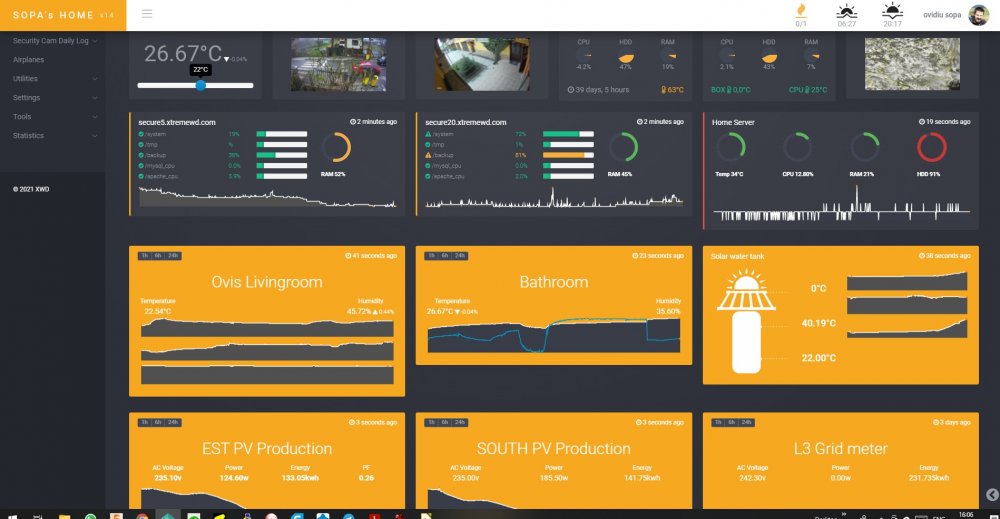
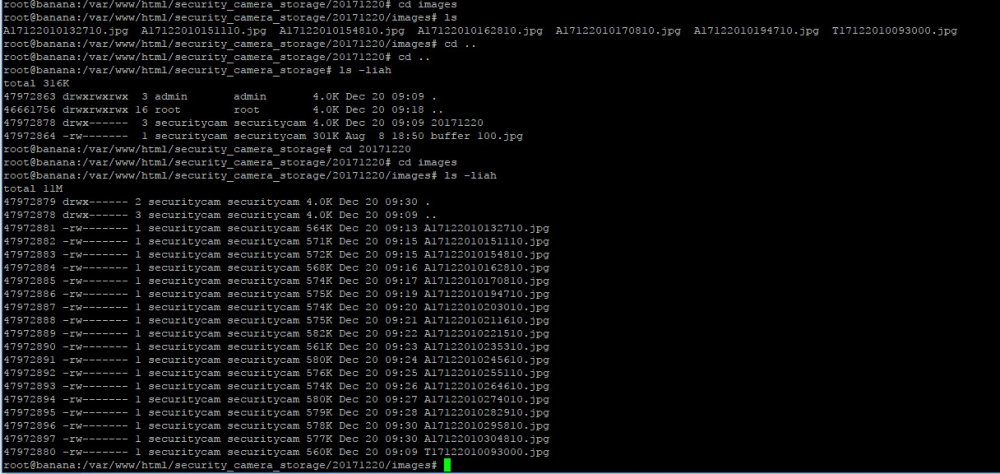
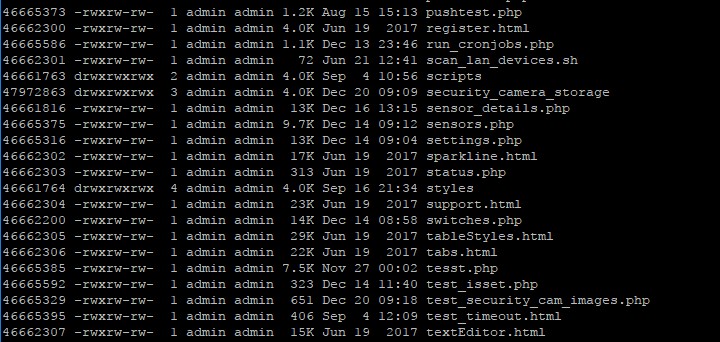
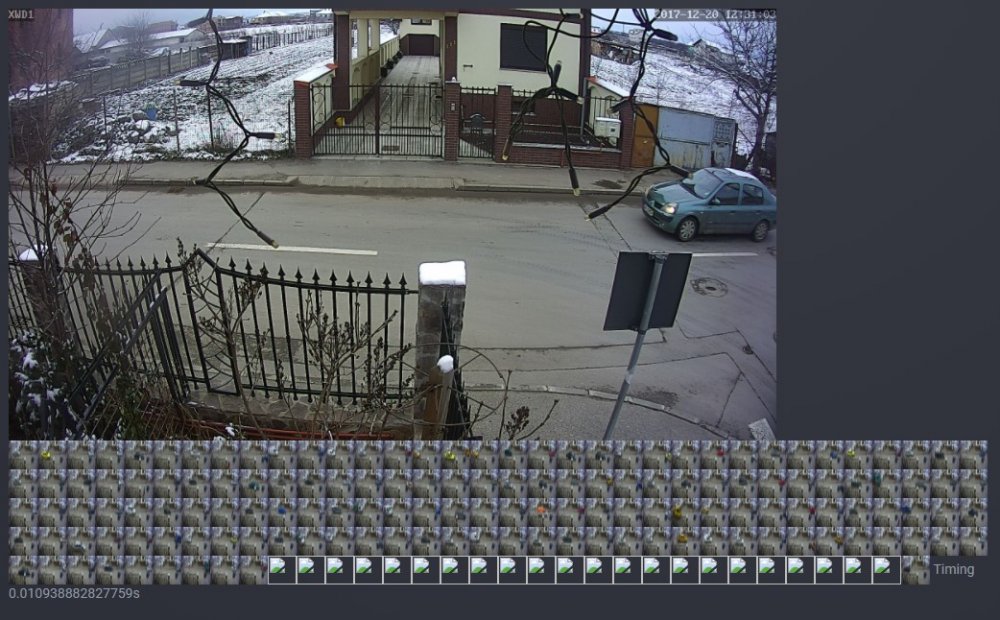
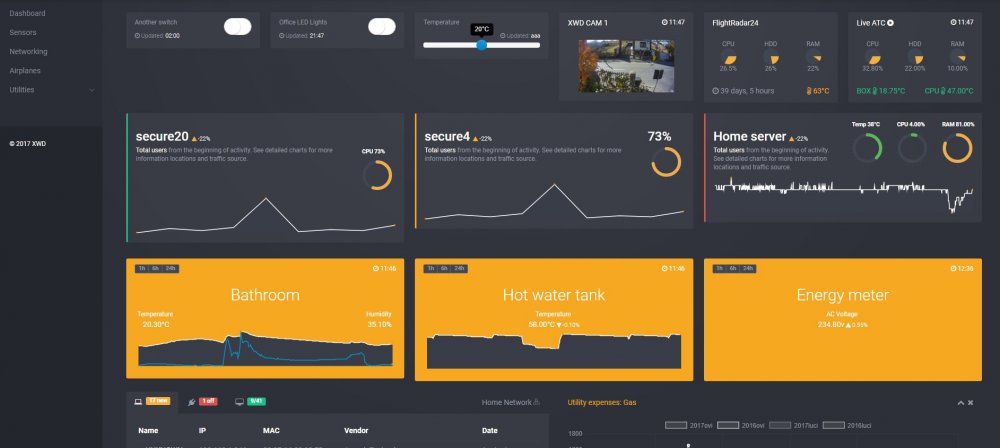

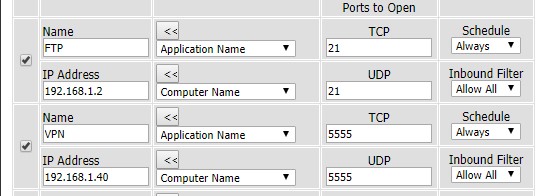
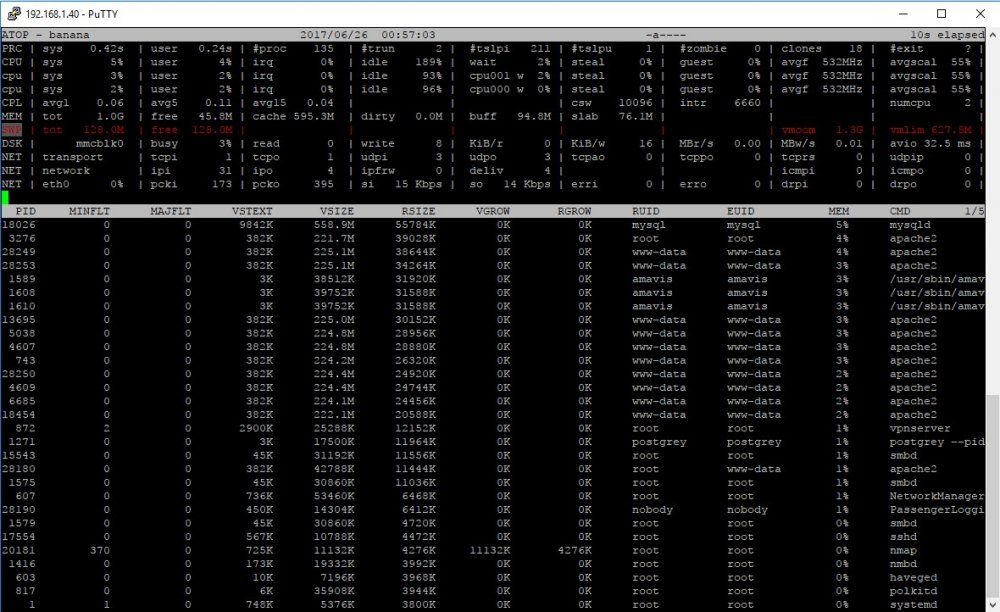
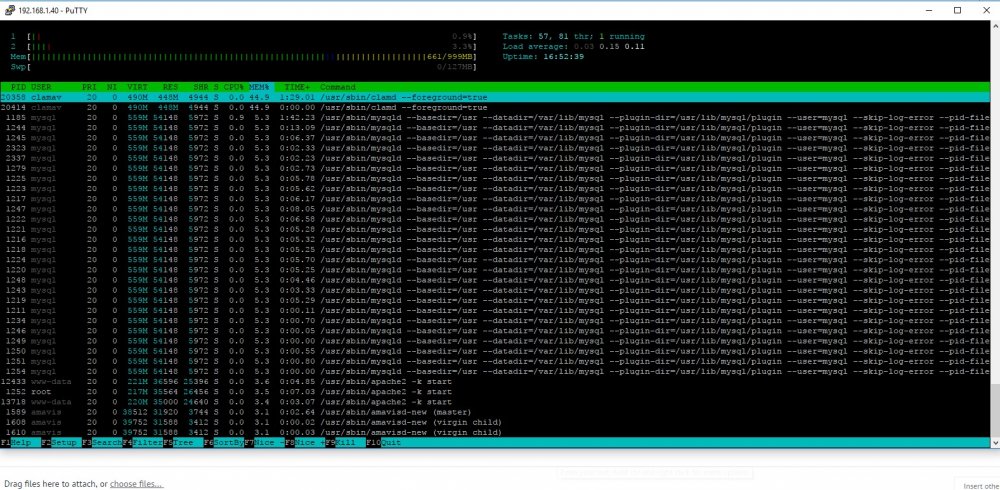
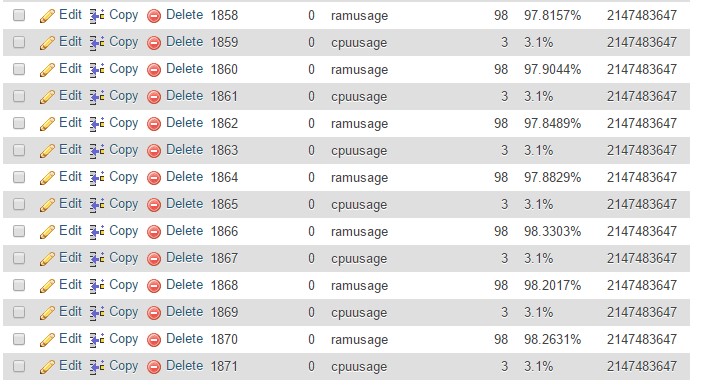
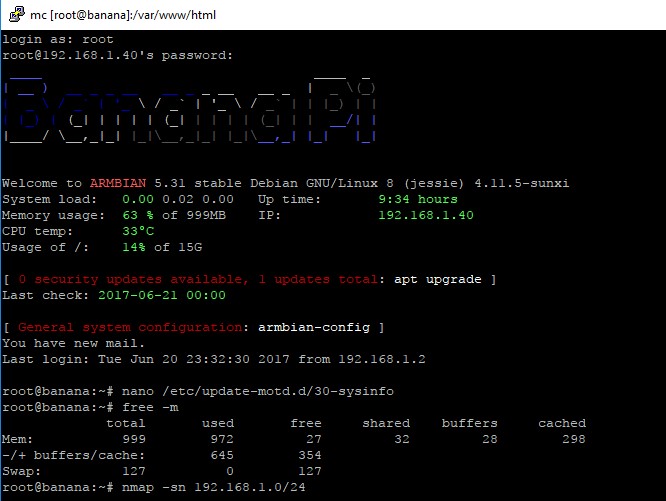
Bananapi M1 + SSD since 2018, now stuck in read-only filesystem
in Beginners
Posted
I soldered the 5v wires from the PSU to the BananaPi board, I think there ware some pads dedicated to solder the DC input . I didn't use the USB connector of the board.
The PSU also powers some led strips and a router in my office, you know if you join the black and green wire in the PSU connector, it stays on forever
The bananaPi had this "read-only" problem , with this SSD , for the first time now, after 3 years of running 24/7, so the issue is not something repetitive, it never happen, we'll see if from now on will happen more offten, I hope not.
 Anyway, I will change a few things as I mention, because there are many photos saved on the ssd by the cameras, but they are temporary, and are automatically deleted after 7 days, so it's information that is not important, and could be saved on a flash drive, which if it will fail, I'll throw it directly to the garbage bin, and mount another one. On the ssd I also have the mysql database, with the sensors data, which are more important.
Anyway, I will change a few things as I mention, because there are many photos saved on the ssd by the cameras, but they are temporary, and are automatically deleted after 7 days, so it's information that is not important, and could be saved on a flash drive, which if it will fail, I'll throw it directly to the garbage bin, and mount another one. On the ssd I also have the mysql database, with the sensors data, which are more important.
"If you never changed anything and never moves cables, forget that" .. No , I haven't touched the cables or the Pi, an and also the PSU is connected to an UPS, there wasn't any main power failure, nor a reboot.
I'm happy it works ok now, I don't know what was the cause, but I'll worry only if it will happen more often
If it will happen again, I'll post back for sure.
Have a nice evening. Thank you again.